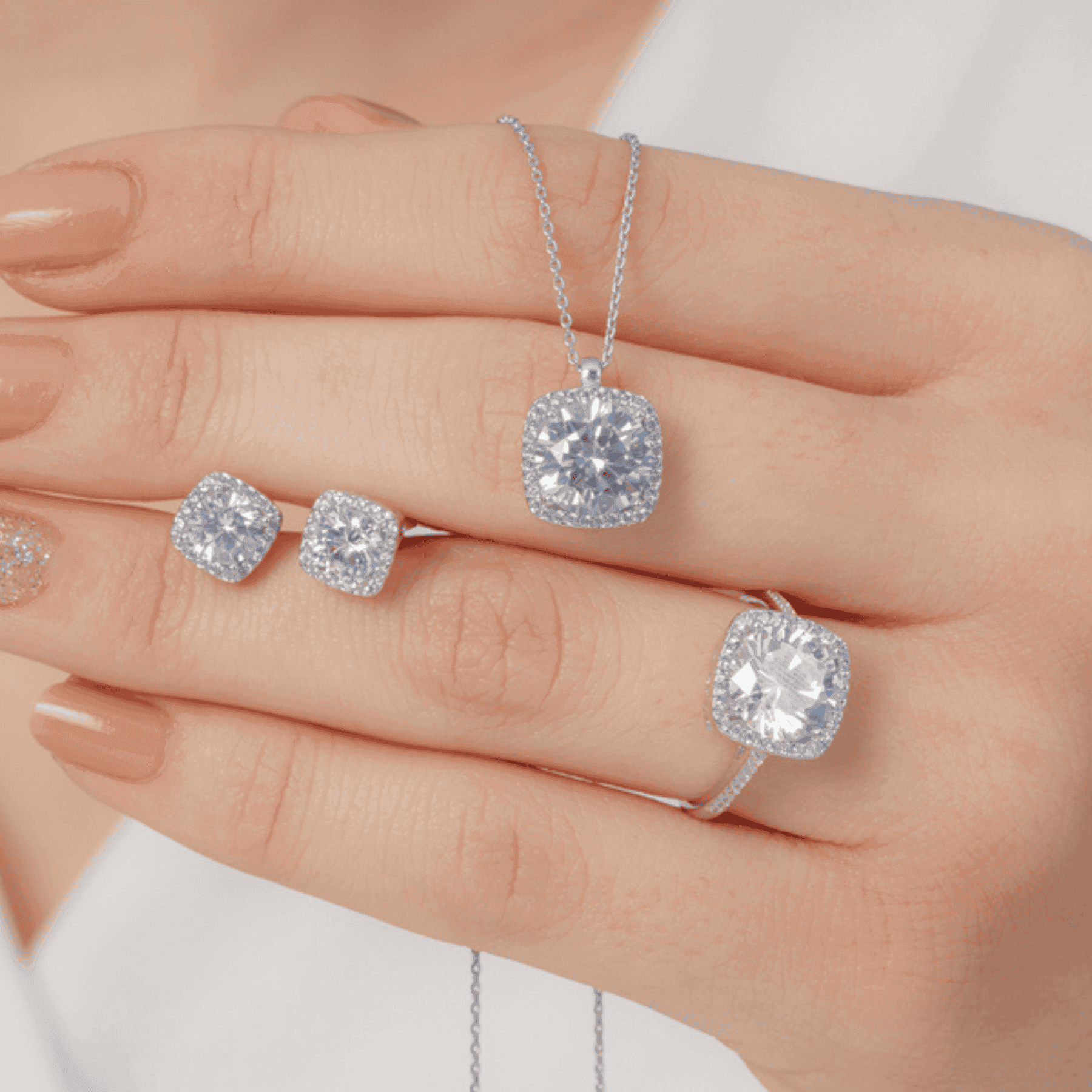
Watches & Jewellery
•05 min read

Mixing metals in jewelry is a timeless trend that exudes sophistication and creativity. Whether you are layering silver and gold necklaces, stacking mixed metal rings, or blending metals in watch designs, mastering how to mix metals can elevate your accessory game. This guide provides a step-by-step checklist to help you confidently combine gold and silver jewelry, pair different metal finishes, and coordinate jewelry with mixed metals for any occasion.
Before diving into styling, it’s essential to understand the fundamentals of mixing metals. Mixed metals add depth and interest to your accessories, creating a curated and intentional look that reflects your personal style. Combining gold and silver jewelry allows you to break free from traditional rules and embrace both modern and timeless trends. This approach works well whether you are aiming for a casual vibe or preparing for a more formal setting.
Mixing metals works because it allows the wearer to express identity in a unique, stylish manner. Some key reasons include:
Mixed metals add depth, creating a layered and intentional look.
Combining gold and silver jewelry offers a balanced interplay of warm and cool tones.
This trend suits both everyday and special occasions.
When considering how to pair different metal finishes, keep in mind that certain combinations work better than others. Classic gold and silver offer a pleasing interplay of warm and cool elements. Additionally, matching rose gold with silver provides a feminine and romantic touch, perfectly suited for a variety of styles. Always aim for metals with complementary undertones, and avoid pairing metals that might clash, such as overly yellow gold with stark, cool silver.
This checklist will help you orchestrate a balanced mixed metal look that feels cohesive and intentional. By following these detailed steps, you can ensure that your accessories come together in a stylish manner that works seamlessly with your outfit.
Begin your styling by choosing a dominant metal. For instance, if you love a warm palette, make gold the base for your pieces, or if you lean towards cooler shades, silver can serve as the foundation. Use the dominant metal in larger accessories like watches, necklaces, or bracelets to anchor your overall look.
Layering silver and gold necklaces is a great way to add visual interest to your outfit. Consider the following tips when layering:
Use necklaces of varying lengths to create a cascading effect.
Choose pieces that complement each other in thickness and design.
For a more subtle style, pair delicate chains with bold pendants that balance the look harmoniously.

When stacking mixed metal rings or styling mixed metal bracelets, experiment by mixing textures. For example, juxtapose a hammered gold ring with a polished silver one. Similarly, alternate bracelets in gold and silver to create a balanced composition that adds sophistication without overwhelming your overall aesthetic.
Watches with mixed metal elements are a great way to incorporate this trend into your daily style. When selecting a watch, look for details like mixed metal straps or dials. This can serve as the conversation starter for your curated accessory set. Always strive for watches that blend both modern smart design and classic analog charm, aligning with the concept of blending metals in watch designs seamlessly.
Metal finishes play a crucial role in how you mix metal tones in accessories. Paying attention to finishes can help you achieve a look that is not only trendy but also perfectly balanced. Here are a few tips to guide you in creating a polished appearance:
Gold comes in several shades ranging from traditional yellow to soft rose gold. When coordinating your jewelry with mixed metals, make sure the pieces share similar undertones. Cool-toned silver pairs best with lighter gold, while warmer gold complements rose gold beautifully. This simple rule can help you navigate tips for mixing jewelry metals effectively.
Another vital tip for mixing metal tones in accessories is balancing matte and shiny finishes. Combining a matte silver piece with a polished gold accessory can create a dynamic and eye-catching contrast. However, try to avoid using all shiny pieces at once, as this may overwhelm the overall look, leading to a less cohesive outfit.
Expert Tip – Balance Is Key
Did you know? Achieving balance is crucial when mixing metals. Always distribute your chosen metals evenly across your accessories—this creates a cohesive look that feels intentional rather than random.
Even the most style-savvy individuals can fall into a few traps when it comes to combining gold and silver jewelry. Awareness is the first step towards flawless styling. One common pitfall is overloading your look with too many metal types. Stick to two or three metal types, and ensure that the size of your pieces is proportionate. This way, you form a visual balance rather than a chaotic mix. Also, pay attention to the harmony of your accessories—ensuring that one statement piece does not overshadow the rest helps maintain an intentional, curated look.
Keep your styling simple by limiting the mix to two or three metal types. Too many metals can result in a cluttered appearance. Aim to distribute metals evenly so your look remains balanced and stylish.
Pay attention to proportions in your jewelry selection. Pairing oversized elements with delicate ones can disrupt the harmony of your ensemble. Keeping the scale of your accessories consistent enhances the overall impact of your mixed metal look.

Your ability to mix metals opens up endless styling possibilities that work for both casual and formal events. The key is to adjust your accessory choices to match the tone of the occasion. Whether you're going for an effortless everyday look or planning for a sophisticated evening event, mixed metal jewelry can be your best ally.
For casual settings, pair simple mixed metal bracelets with a watch to achieve an effortless look. Layering silver and gold necklaces with a neutral outfit adds a subtle sophistication that reflects a chic yet laid-back style. This approach highlights your individuality without appearing overly styled.
When dressing up for formal events, opt for statement pieces such as mixed metal chandelier earrings or bold necklaces. Coordinate your jewelry with the color palette of your outfit to create a polished appearance. This refined strategy demonstrates thoughtful styling that is both sophisticated and modern.
Start by choosing a dominant metal, then layer complementary pieces in other metals. Balance proportions and undertones for a cohesive look.
Mix metals by pairing pieces that share similar finishes or undertones, such as matte silver with polished gold. Layering and balancing are key.
Avoid pairing metals with clashing undertones, such as overly yellow gold with stark silver. Also, keep the number of metal types limited to maintain balance.
While this guide focuses on jewelry, the principles of mixing metals—balance, undertones, and finishes—apply to home decor as well.
Mixing metals in jewelry is an artful way to express your individuality and embrace current trends. By following this checklist, you can confidently combine gold and silver jewelry, layer necklaces, stack rings, and coordinate accessories for any occasion. Remember that balance and intentionality are the keys to an effortlessly stylish, mixed metal look. Explore diverse collections and let your accessories tell your unique story.